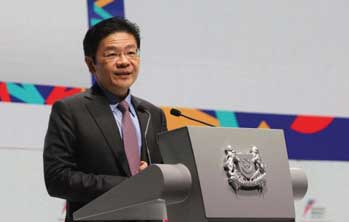Renewable Energy: Asia’s hot spots for green hydrogen
Asian countries are making a mark in renewable energy for lower to zero carbon footprint, with green hydrogen, says Angelica Buan in this article
Going net-zero: the society’s impossible dream?

A net-zero economy appears to be a Utopian future where everything is balanced and there is no climate issue. However, the push for a net-zero economy has never been more urgent than now.
In a net-zero scenario, total greenhouse gas (GHG) emissions, such as carbon dioxide (CO2), are countered by measures that either eliminate or capture an equivalent amount of CO2 from the environment. The use of renewable energy could help the world move to a net-zero economy.
With a steady reduction in carbon emissions, it is predicted that by 2050, coal energy production, which accounts for a fifth of worldwide GHG emissions, will practically disappear, but electricity consumption would more than double.
To meet the rising demand for electricity, renewable energy output is likely to rise. According to McKinsey's report titled The Netzero Transition: What it Would Cost, What it Could Offer, production of hydrogen and biofuels would rise more than tenfold between 2021 and 2050. Other industries, for example those that manage carbon with carbon capture and storage technologies, could also grow.
Similarly, low-emissions products and processes that replace traditional high-emissions options, such as expanding production of electric vehicles instead of internal combustion engine (ICE) vehicles and production processes fueled by green hydrogen, will take the forefront.
Green hydrogen, which is produced through electrolysis from renewable electricity, can play a critical part in the worldwide transition to a low-carbon economy. It can be produced from renewable sources, eliminating reliance on fossil fuels and energy imports.
Green hydrogen can help to decarbonise difficult-to-abate sectors like heavy industries, transportation, and power generation. These industries can dramatically lower their carbon footprint by replacing fossil fuels with green hydrogen.

By 2050, industries like iron and steel, chemicals, cement, transport and aviation will account for up to 42% of total clean hydrogen demand. According to Deloitte's 2023 global green hydrogen outlook, it can reduce cumulative emissions by up to 85 GtCO2eq by 2050, which is more than double the global CO2 emissions in 2021.
Increased use of green hydrogen has the potential to improve energy security, spur regional growth, and promote global cooperation in the fight against climate change.
According to the Asian Development Bank (ADB), Asia-Pacific has accounted for more than half of global hydrogen investment by 2021, with an increasing number of nations in the region adopting national-level hydrogen programmes to speed up decarbonisation.
There is no doubt that the region has a huge potential market for green hydrogen. Nonetheless, a few critical factors, such as high production costs affecting investment viability, could prevent green hydrogen from fully contributing to the region's energy transition.
According to the Deloitte research, global investment in hydrogen in 2020 was only US$1.5 billion, or 0.5% of the record US$500 billion in renewable energy investment that year. Nonetheless, the region has mapped out strategic investment plans to develop green hydrogen infrastructure.
India’s energy autonomy plans hinge on renewables
India has set a goal of becoming energy independent by 2047 and net-zero by 2070. According to data from Invest India, the government's investment promotion energy platform, India ranks fourth in the world in renewable energy installed capacity, as well as fourth in wind power capacity and solar power capacity, according to the REN21 Renewables 2022 Global Status Report.
(PRA)
Subscribe to Get the Latest Updates from PRA Please click here
©2023 Plastics and Rubber Asia. All rights reserved.

©2023 Plastics and Rubber Asia. All rights reserved.
Home Terms & Conditions Privacy Policy Webmail Site Map About Us
















